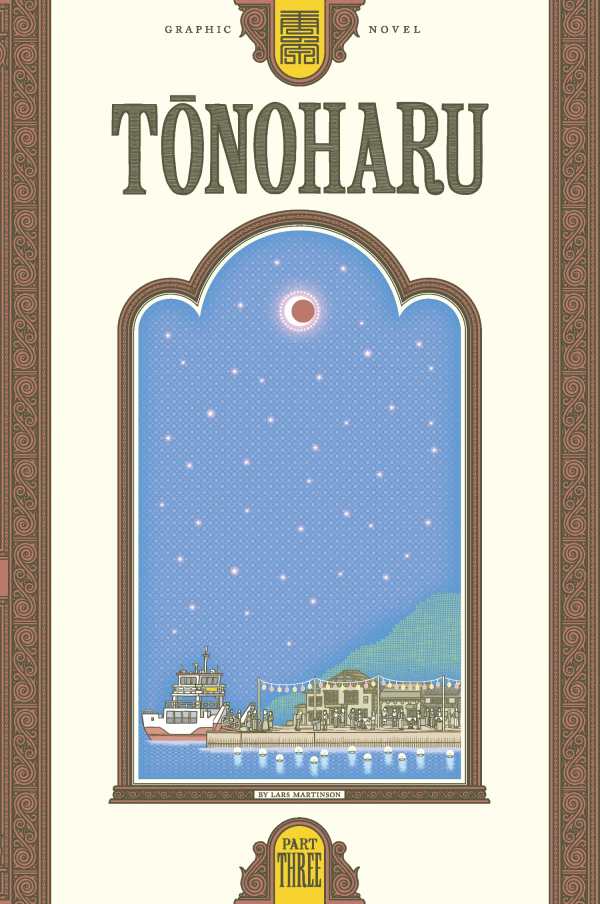Tonoharu
Lars Martinson closes his stark tale about isolation and the foreign experience in Tonoharu: Part Three. Tonoharu, the Japanese town where central character Dan Wells teaches English, is the setting for Dan and his supporting cast of characters, as they grasp at connections, foiled not just by language and custom, but by their own desires and uncertainty.
The plot is driven by Dan’s attempts to piece together a mystery and by the question of whether or not he will renew his contract to stay in Japan. But fundamentally, Tonoharu is about relationships. Martinson’s writing gives a vivid sense of the loneliness of being an expatriate, through small, and often humorous details that show the difficulty of dual-language communication.
Martinson is masterful at setting the mood with dialogue, but the true star here is his artwork. Though people are somewhat cartoonish in appearance, they’re consistent and proportional, making the choice highly effective—while the landscapes, interiors, and backgrounds are drawn with intricate, detailed textures and crosshatching that would make Robert Crumb envious.
Several appendices and an epilogue reveal the supporting characters’ secrets, filling in gaps and tying up loose ends, even as they preserve the central themes of Tonoharu. Martinson’s work is contemplative and sublime, and his book lingers in memory well after its end. It is a transformative experience, even (or perhaps especially) for those who’ve never set foot in Japan.
Reviewed by
Peter Dabbene
Disclosure: This article is not an endorsement, but a review. The publisher of this book provided free copies of the book to have their book reviewed by a professional reviewer. No fee was paid by the publisher for this review. Foreword Reviews only recommends books that we love. Foreword Magazine, Inc. is disclosing this in accordance with the Federal Trade Commission’s 16 CFR, Part 255.

